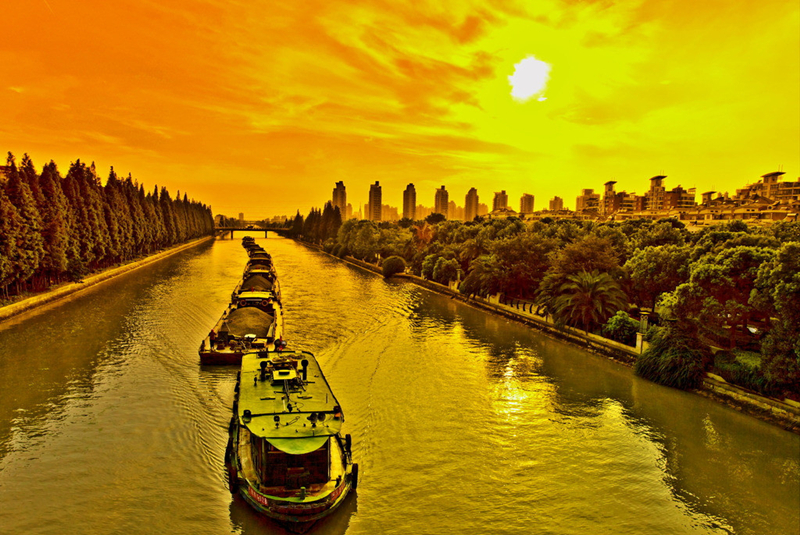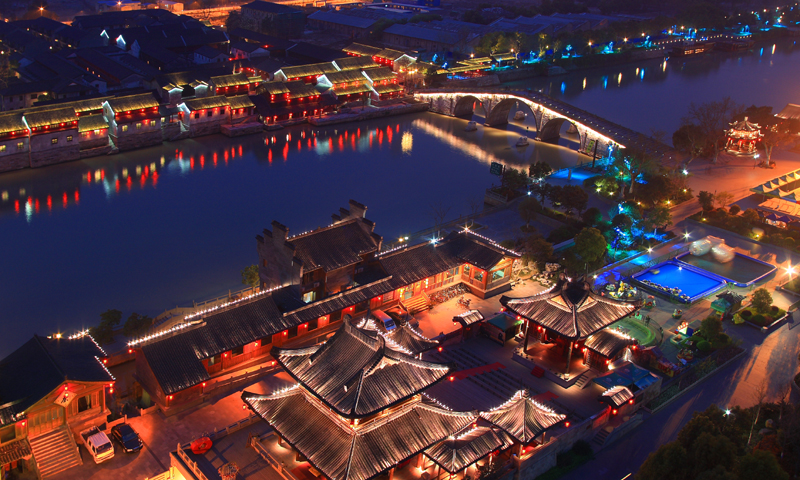- The Grand Canal - A Human Wonder
- 2013-07-03
-
There are two wonders in China one is the Great Wall and the other is the Grand Canal. For its size and grandeur the Grand Canal has always been regarded as the pride of the Chinese people and as a symbol of Chinese cultural achievement. As the earliest, greatest and longest artificial river in the world, the Beijing-Hangzhou Grand Canal is of greatest historical and cultural importance.

History
The Grand Canal has a history of over 2,500 years going back to as early as the 5th century BC and starting in Beijing and ending in Hangzhou it is also, appropriately, known as the Beijing-Hangzhou Grand Canal. The Grand Canal passes through Tianjin City and the provinces of Hebei, Shandong, Jiangsu and Zhejiang and links the two longest rivers in China - the Yellow River and Yangtze River. The total length of the Grand Canal is 1,794 kilometers and it has taken 1,799 years to form its current shape and size.
The Grand Canal was first dug to transport grain and luxuries to Beijing but was later used by merchants to ship commodities which made its corridor develop into a prosperous economic belt, also serving as a powerful force for unifying Chinese culture and integrating Chinese politics.

Named Emperors’ River by foreign visitors because of its strong connection with numerous Chinese Emperors, the Grand Canal was a water gateway for many Emperors making ship-trips along the Grand Canal to Southern China. In the Qing Dynasty, Emperor Kangxi and Qianlong made twelve adventurous trips to the south.
The Grand Canal’s significant role in China’s culture, economy and politics has blessed it with numerous historical and cultural landscapes and has also earned it the title - ‘The Gallery of Chinese History, Ancient Technology, and Local Customs’.

Attractions
Although some parts of the Grand Canal have been blocked, the Jiangsu-Zhejiang portion still remains open for transportation with many scenic spots and historical sites making it a hot touristic route.

Here are some of its tourist attractions that are not to be missed:
The Park of Fuyicang Site (富义仓遗址公园)
Gao’s Private Garden (高家花园)
Xiangji Temple (香积寺)
Qingsha Town (青莎古镇)
The Historical Culture Street West of the Gongchen Bridge (拱宸桥西历史文化街区)
The Canal Plaza (运河广场)
The Walking Street on Taizhou Road (台州路步行街)
Private Houses along the Canal-side Straight Street (小河直街民居)
The Leisure Walking Street on Dadou Road (大兜路休闲步行街)
The Cityscape Belt on the Eastern Canal Bank (运河东岸城市景观带)
The Historical Preservation Belt on the Western Canal Bank (运河西岸历史保护带)